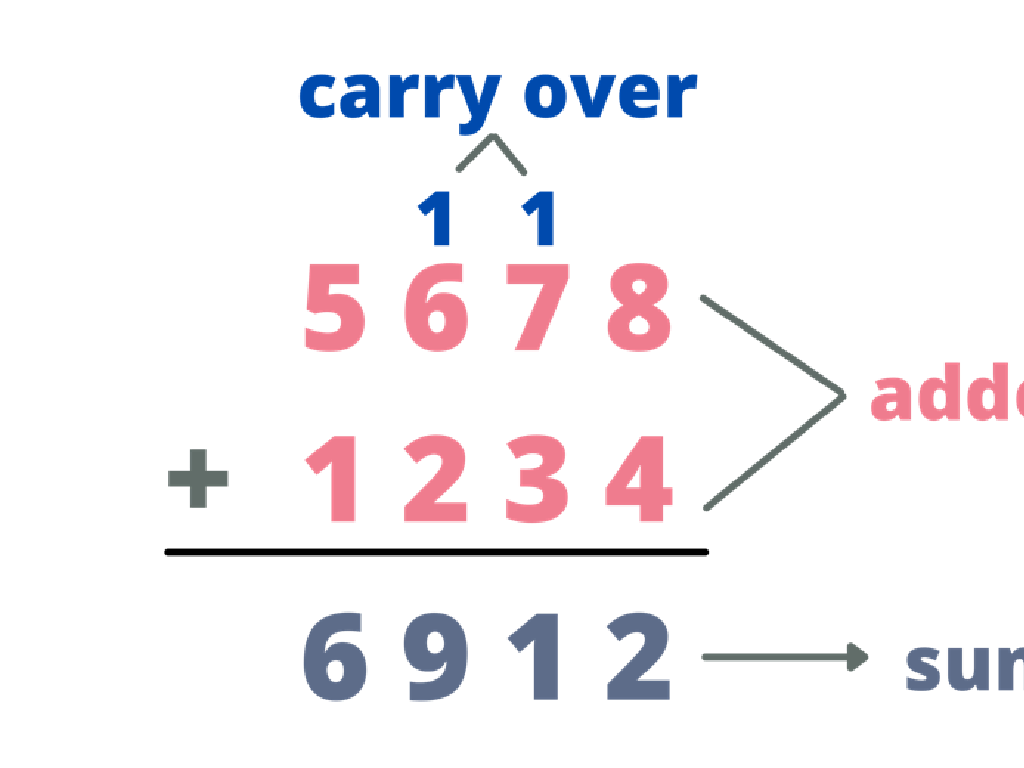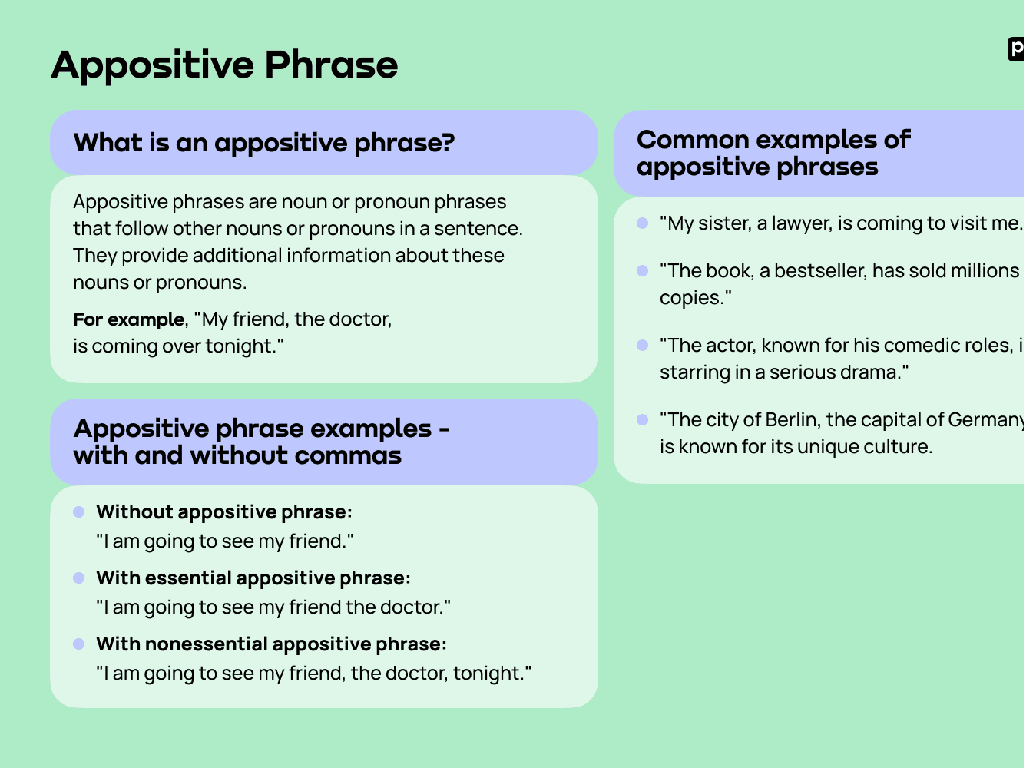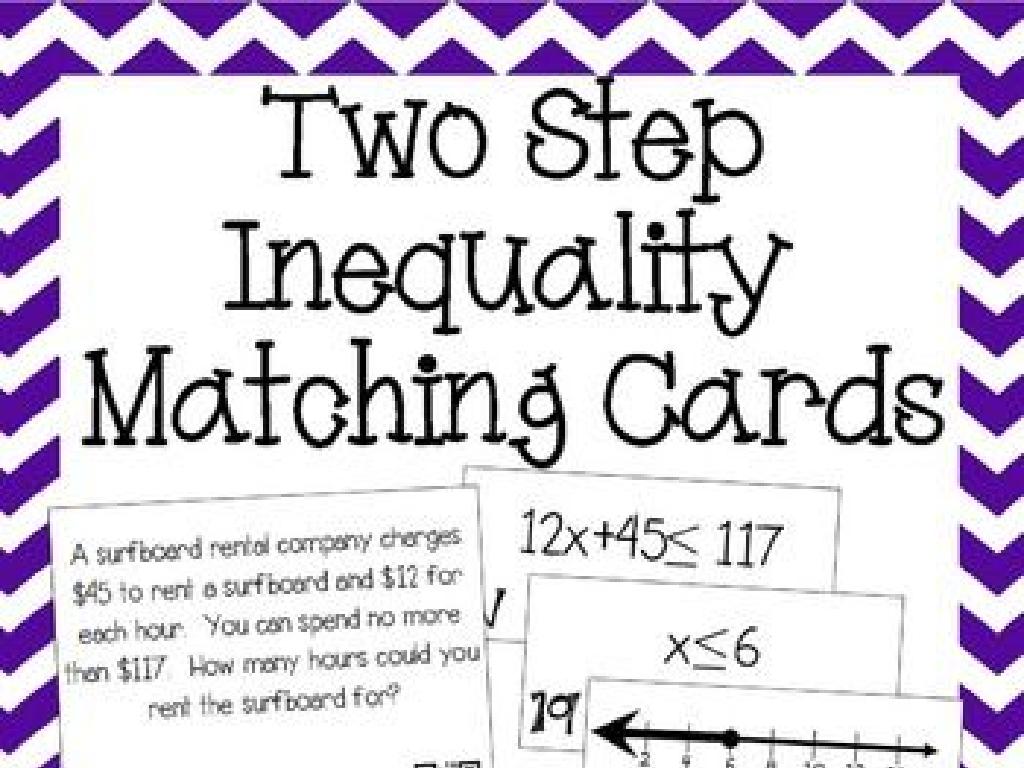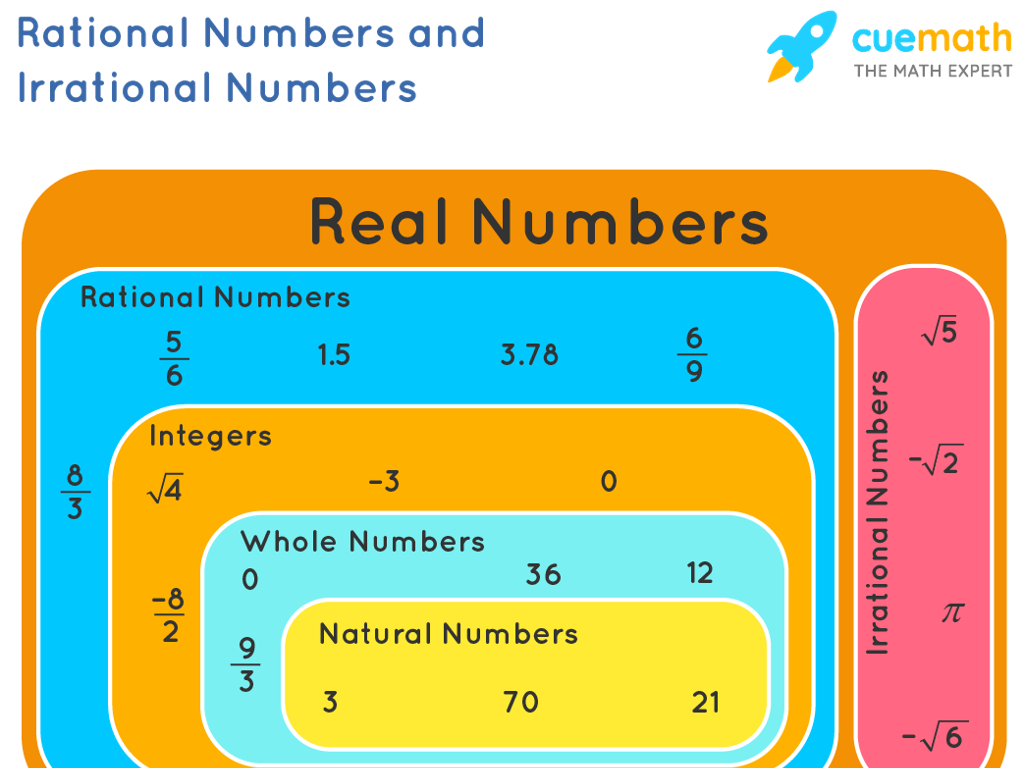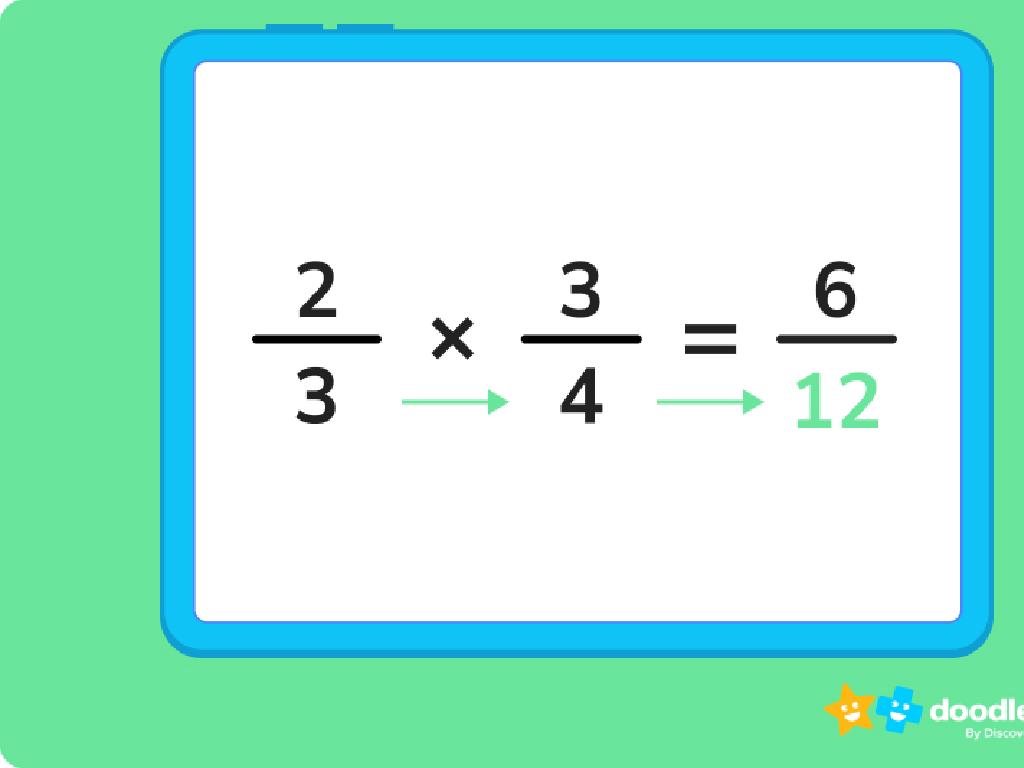Add With Cubes - Sums Up To 5
Subject: Math
Grade: Kindergarten
Topic: Addition Up To 5
Please LOG IN to download the presentation. Access is available to registered users only.
View More Content
Welcome to Addition!
– Learning to add numbers
– Using cubes for addition
– Cubes make it fun to see addition
– Addition combines counts
– Like adding 2 apples + 3 apples
– Practice sums up to 5
– Let’s add: 1 cube + 4 cubes
|
This slide introduces the concept of addition to Kindergarten students. Start by explaining that addition is a way of putting things together to find out how many there are in total. Use physical cubes to demonstrate this concept, as they provide a tangible way for young learners to visualize the process. Show how to combine groups of cubes, starting with smaller numbers and building up to sums of 5. Encourage the students to participate by picking up the cubes and counting as they add them together. This hands-on activity will help solidify their understanding of basic addition.
Learning to Add with Cubes
– What is addition?
– Putting together numbers to see how many in all
– Adding means finding the total
– If you have 2 apples and get 3 more, how many now?
– The ‘+’ sign means add
– When we see ‘+’, we combine numbers
– Practice with cubes up to 5
– Use blocks to add numbers like 2 + 3
|
This slide introduces the concept of addition to Kindergarten students. Start by explaining that addition is the process of combining two or more numbers to find out the total amount. Use simple, relatable examples like combining fruits or toys to illustrate the concept. Show the ‘+’ sign and explain that it tells us to put numbers together. Use physical cubes to demonstrate addition, allowing students to visualize the process as they combine groups of cubes to reach sums up to 5. Encourage hands-on practice and ensure that students understand that addition is about finding out how many items they have altogether.
Adding with Cubes: Sums Up to 5
– Cubes show how addition works
– Use cubes for numbers up to 5
– Start with 1 cube, then add more
– If we have 1 cube and add 1 more, how many now?
– Practice adding cubes together
– Try 2 cubes plus 2, or 3 plus 1, and see the sum!
|
This slide introduces the concept of addition using a tactile method with cubes, suitable for Kindergarten students. Start by explaining that cubes can represent numbers and adding them together shows us the total. Demonstrate with actual cubes, starting with one and adding more up to a total of five. Encourage the students to physically manipulate the cubes to see the concept of addition in action. Provide examples like 1+1, 2+2, and 3+1, and ask the students to predict the sum before confirming by counting the cubes. This hands-on activity will help solidify their understanding of basic addition.
Let’s Add Together with Cubes!
– Start with 1 cube
– Add 1 more cube
– Now we have 2 cubes!
– Try adding more cubes
– Use different numbers, always summing up to 5
|
This slide is designed to introduce the concept of addition using physical objects, such as cubes, which are tangible and therefore easier for Kindergarten students to understand. Start by showing them one cube and then adding another one to it. Ask the students how many cubes there are now to involve them in the learning process. Once they understand that 1 cube plus 1 more cube equals 2 cubes, encourage them to try adding different numbers of cubes together, with the goal of reaching sums up to 5. This hands-on activity will help solidify their understanding of basic addition. For the activity, prepare sets of cubes for each student and guide them through various addition scenarios, ensuring they do not exceed the sum of 5.
Practice Time: Adding with Cubes
– Try adding with cubes now
– Add numbers up to 5
– Work with a partner
– Find a friend to help you count
– Use cubes for addition
– Stack cubes to see the sum
|
This slide is designed for a hands-on activity where students will practice adding numbers up to 5 using physical cubes. Encourage the children to work in pairs to foster collaboration. They should use the cubes to visualize the addition process by stacking them together to form a sum. As they work, walk around the classroom to offer guidance and ensure they understand the concept. Possible activities include: having students pick a card with a number and finding a partner to make a sum of 5, creating a game where they roll a dice and add that number of cubes to a stack, or asking them to find different combinations of cubes that add up to 5.
Adding Up to 5 with Cubes!
– We can add up to 5 cubes
– Count cubes for total number
– Each time we add, we count all the cubes one by one.
– Example: 2 cubes + 3 cubes
– Adding 2 cubes and 3 cubes together, let’s count them.
– How many cubes in total?
– After adding, we count again to see the new total.
|
This slide introduces the concept of addition using physical cubes, which is a tangible method for Kindergarten students to understand adding numbers up to 5. Start by explaining that they can add different numbers of cubes together, from 1 to 5. Demonstrate how to count the total number of cubes after they are combined. Use the example of adding 2 cubes to 3 cubes and ask the students to count along with you to find the total. Encourage the students to use their fingers or physical cubes to practice this addition. This hands-on activity will help solidify their understanding of basic addition.
Class Activity: Cube Tower Addition
– Build towers using cubes
– Each tower represents a sum up to 5
– Share your towers with classmates
– Explain how you added the cubes
– For example, 2 cubes + 3 cubes = 5 cubes
|
This activity is designed to help Kindergarten students visualize addition by physically stacking cubes to create towers. Each student will use a set number of cubes to build towers that represent different sums, not exceeding 5. The act of stacking will reinforce the concept of adding two numbers together. After building, students will present their towers to the class, explaining the addition they represent. For instance, a student might show a tower of 2 cubes and another of 3 cubes, then combine them to make a tower of 5, demonstrating that 2+3 equals 5. Teachers should prepare different sets of cubes and ensure each student has enough to make sums up to 5. Encourage students to explore different combinations, such as 1+4 or 0+5, to build their understanding of addition within 5.
Review: Adding with Cubes Up to 5
– Adding makes one total number
– The ‘+’ sign means add together
– Cubes show us addition visually
– For example, 2 cubes + 3 cubes = 5 cubes
– Practice adding with cubes
– Try 1 cube + 4 cubes, or 2 cubes + 2 cubes
|
This slide is a review of the concepts learned about addition using cubes. Emphasize that adding is the process of combining numbers to get a total. The ‘+’ sign is a new symbol for them that represents this action. Using cubes is a tactile and visual way to help students understand the concept of addition by physically combining groups of objects. Encourage the students to practice with different combinations of cubes that add up to 5, reinforcing the concept through hands-on activity. Provide guidance on how to use the cubes effectively and ensure that each student is comfortable with the process of adding small numbers.
Conclusion and Goodbye!
– Great job with cube addition!
– Practice makes perfect
– Keep practicing at home
– Use your cubes to add numbers up to 5
– Exciting addition next class!
– We’ll explore more fun addition activities!
|
Today’s class was a success, and the students did a great job learning to add with cubes. Reinforce the idea that practice is essential, and encourage them to continue practicing at home to solidify their understanding. Let them know that their efforts are appreciated and that there’s more fun and learning to look forward to in the next class. Prepare a set of simple addition exercises that they can do with their parents or guardians at home. For the next class, plan a variety of engaging addition activities that will continue to build on their skills and keep them excited about math.

